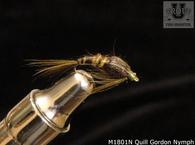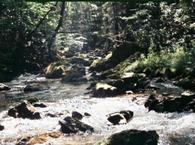
I hear some anglers refer to braided leaders and furled leaders as if they are one and the same which is not correct. A braided leader is produced by braiding (also called plaiting) three or more strands together. Three strands result in a flat ribbon line while more strands will result in a line that is more round. Braiding produces a leader with a small hollow core and with just enough stretch to act as a shock absorber.
In today’s commercial production of braided leaders, nylon is the common material while in yesteryear, horse hair was used. Braiding is also a common procedure used to make some types of rope.
Furling is done with one continuous strand of nylon. It goes down one side of the jig, wrapping around the pegs and interconnecting the loops, then back up the other side of the jig, making the loops in reverse order. Then one side is twisted and anchored while the other side is twisted. Then unwinding the two sets of loops together forms them into one tapered, twisted strand. When furling is done commercially, 2 or more strands are used in a countertwist action that forms a helical cord. Using 3 strands make the leader more supple with a cross section that is more round.
Furling cand be done with short lengths as well as long continuous lengths. Ropes are often made by twisting together short pieces of cotton, jute, or hemp to form strands and then twisting and furling the strands together for the final rope.
So what is the bottom line? There are pros and cons to both types of leaders. The furled leader will absorb more shock but will have more stretch. The braided leader is just as soft and supple, but will not stretch as much, so it just boils down to just how hard do you want to set the hook? It is a matter of opinion, but here at Troutu, we prefer the braided leader which of course is far superior to any mono leader. Check here to see the advantages of the Perfect Fly Braided Leader.





